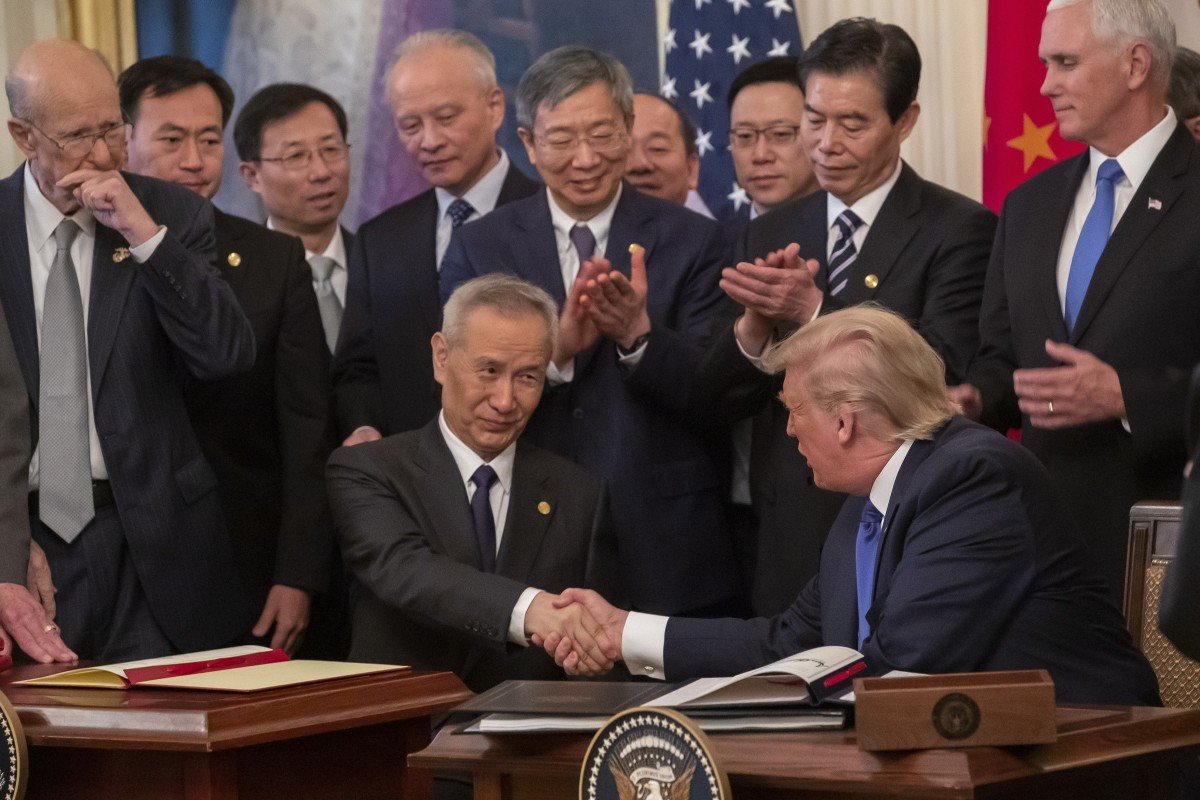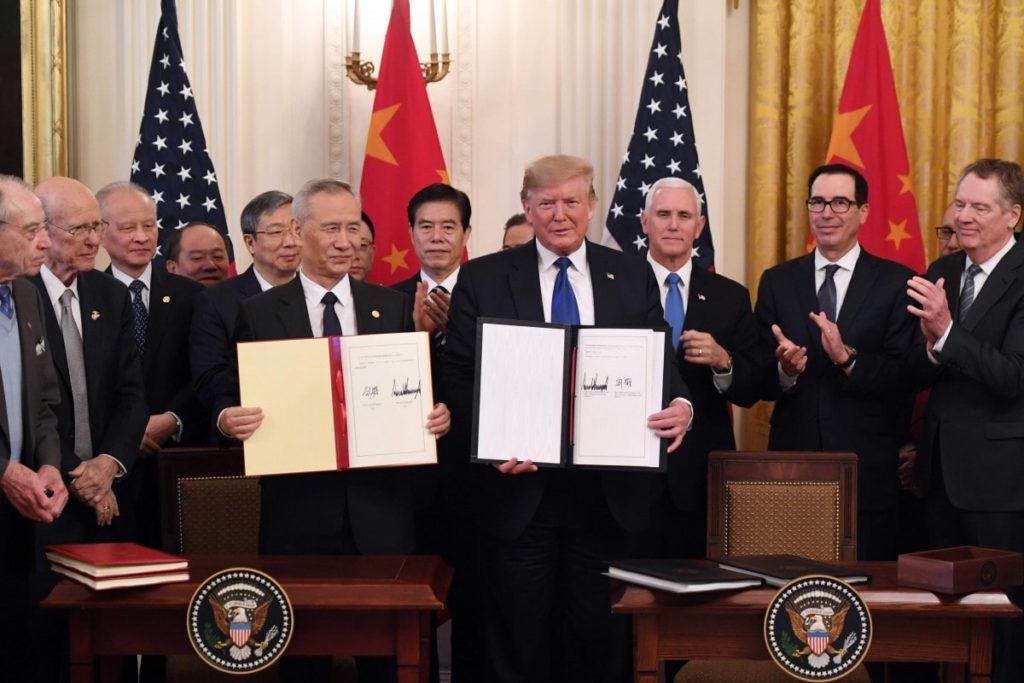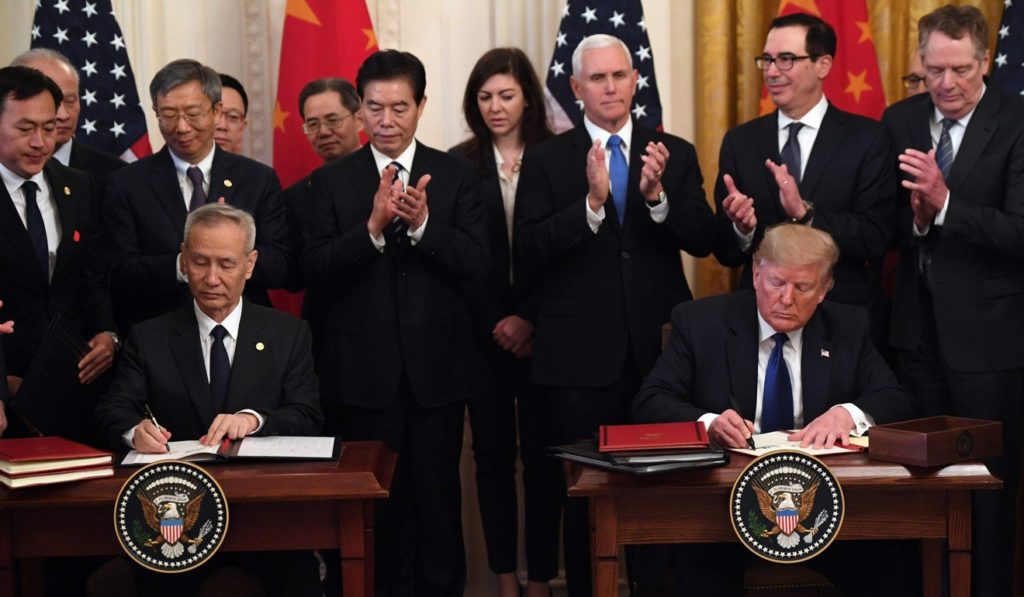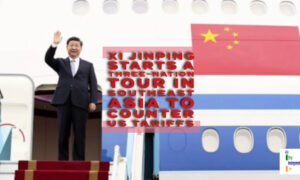
Trump and Liu He signed the Phase-I of the trade deal in the White House leaving the Trade War behind
In a historic moment, the United States (U.S.) and People’s Republic of China have officially signed the Phase-I agreement of the trade deal today, i.e., Wednesday, January 16, 2020, putting an end to the 18-month long trade war.
The deal was signed by President of U.S. – Donald Trump and Vice-Premier of China – Liu He in the White House. The signing ceremony was attended by business executives invited by the Trump Administration, reporters, U.S. lawmakers, Cabinet Ministers and members of the Chinese delegation. The deal covers provisions for purchase commitments, financial market access, Intellectual Property (IP) protection and enforcement.

Before signing the agreement, Trump said, “Today we take a momentous step, one that has never been taken before with China.”
He thanked everyone present in the signing ceremony. Trump also said that he would be travelling to Beijing to meet the President of China – Xi Jinping. The deal has been signed after U.S. and China announced to have reached consensus in December 2019.
As per the terms of the trade deal, China will spend U.S. $ 200 billion more than what it did in 2017, for buying American goods and services, over the next 2 years. Of this, U.S. $ 77 billion purchases will be made in manufacturing sector, U.S. $ 52 billion will be used to make purchases in energy sector, U.S. $ 32 billion would go to agricultural sector and U.S. $ 38 billion will be used in services sector which includes tourism, financial services and cloud services.
In addition, China has also agreed to remove barriers it had imposed on U.S. exports including beef, poultry, seafood, dairy, rice, infant formula, animal feed and biotechnology. China will also be speeding up the approval process for new agricultural biotech crops to an average of 24 months. Presently, it takes around 5-7 years to get it approved.
With this new deal in place, planned December tariffs of U.S. $ 162 billion on Chinese goods stand suspended. Tariffs on a separate set of categories of U.S. $ 360 billion will remain in place. However, China will not lift any of the retaliatory tariffs it had imposed on American goods worth U.S. $ 110 billion. China will also not force U.S. companies in China to share IP in exchange for allowing access to Chinese market.

The trade deal will be executed under a strict enforcement mechanism, wherein all the complaints will be resolved unilaterally within 90 days. The complaints will first be presented at working level. If they fail to resolve the matter, it would be escalated to Deputy level. If the matter remains unresolved, it would finally be raised to Secretary level.
The mechanism allows the U.S. to retaliate if their complaints remained unresolved. In such a scenario, China has promised that it will not counter-retaliate. Trump has also mentioned that completion of Phase-I deal would mean complete removal of U.S. tariffs on Chines imports. Besides, the negotiations for the Phase-II deal will also commence soon.
Contrary to the progress, the Alliance for American Manufacturing, an industry association, has written a letter to Trump, terming the deal as “completely inadequate.” They believe that most of the structural issues have been left unresolved.







